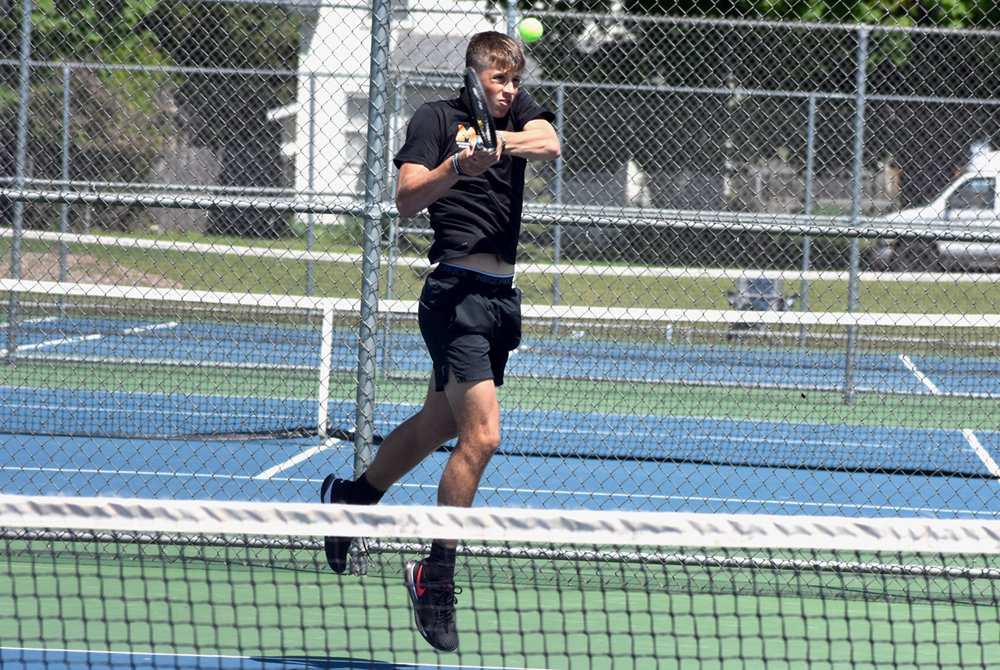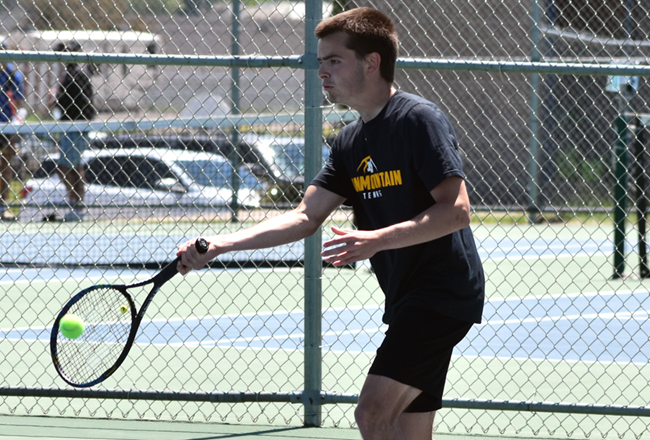
Casting Lines for Future Tournaments
August 12, 2016
By Jack Roberts
MHSAA Executive Director
The MHSAA is best known to the public for the tournaments it conducts to conclude the fall, winter and spring seasons each school year.
These tournaments, the first and largest program of the MHSAA, have survived the Vietnam War, the Korean conflict and two World Wars. They have survived the technology bubble, the housing collapse, the energy crisis and the Great Depression.
MHSAA tournaments existed at the dawn of aviation and at the time of our nation’s lunar landing. Popes, presidents and governors have changed and changed again and again, and MHSAA tournaments roll on year after year.
But the sense of tradition and permanence and inevitability of MHSAA tournaments doesn’t dissuade us from asking questions about our tournaments, even some of the most basic questions. Here are two.
Question #1
I have long been and will always be an advocate for a Ryder Cup format for the MHSAA Golf Finals, and a team tennis approach to the MHSAA Tennis Finals; but 90 years of tradition is hard to overcome. Might this be a more exciting format? Could it be co-ed? Could it reverse the decline in boys tennis participation, and increase girls golf participation? Wouldn’t it be fun to try?
Periodically, the International Olympic Committee requires each of the designated Olympic sports to defend its status, to state its case why the sport should remain a part of the Olympic program. Then, after a series or votes that retain one sport at a time, the IOC drops the sport that makes the weakest case. It does so to make room for one of the previously unlisted sports that makes the best case for inclusion.
This would appear to keep the existing Olympic sports on their toes, and to keep the Olympic movement fresh and reflective of modern trends in sports.
While I would not enjoy the controversy, I can see the potential for some positive results if the MHSAA were to invoke the same policy for determining the 14 tournaments it will provide for girls and the 14 for boys.
This might cause us to consider more deeply what a high school sport should look like, or at least what an MHSAA tournament sport should stand for.
On the one hand, we might be inclined to drop tournaments for those sports that involve mostly non-faculty coaches and non-school venues, or require cooperative programs to generate enough participants to support a team, or resort almost entirely to non-school funding, or cater to individuals more than teams.
Or perhaps this process would cause policymakers to forget traditional thinking and ask: “In this day and age, should we shake off traditional notions of sport and consider more where modern kids are coming from?” That might mean fewer team sports and more individual sports, more “extreme” sports like snowboarding and skateboarding, and more lifetime sports, meaning not just golf and tennis and running sports, but also fishing and even shooting sports.
Currently, MHSAA policy states that the MHSAA will consider sponsorship of a tournament series for any sport which 64 member schools conduct on an interscholastic basis as a result of action by the governing boards of those schools.
Should the only question be how many schools sponsor a sport, or must an activity also have certain qualities and/or avoid certain “defects?” What should an MHSAA tournament sport look like and stand for?
Question #2
Bristling from criticism that his association is a money-grabbing exploiter of children, my counterpart in another state said, “If we were running our programs just to make money, we would do very many things very differently.” I knew exactly what he meant.
Because we care about the health and welfare of students, because we mean what we say that the athletic program needs to maximize the ways it enhances the school experience while minimizing academic conflicts, and because we try to model our claim that no sport is a minor sport when it comes to its potential to teach young people life lessons, we operate our programs in ways that make promoters, marketers and business entrepreneurs laugh, cry or cringe.
If money were the only object, we would seed and select sites to assure the teams that attracted the most spectators had the best chance to advance in our tournaments, regardless of the travel for any team or its fan base. If money were the only object, we would never schedule two tournaments to overlap and compete for public attention, much less tolerate three or four overlapping events. If money were the only object, we would allow signage like NASCAR events and promotions like minor league baseball games.
Those approaches to event sponsorship may not be all wrong; they’re just not all right for us. And we will live with the consequences of our belief system.
During a typical school year, more than 20 percent of the MHSAA’s 2,097 District, Regional and Final tournaments lose money. Not a single site in golf, skiing or tennis makes a single penny. In no sport did every District, Regional and Final site have revenue in excess of direct expenses.
In fact, in only three sports – boys and girls basketball and football – is revenue so much greater than direct expenses overall that it helps to pay for all the other tournaments in which the MHSAA invests.
That’s right: invests. When we present our budget to our board, we talk about the MHSAA’s investment in providing tournament opportunities in all those sports and all those places that cannot sustain the cost of those events on their own. How much is this investment worth to students, schools and society?
These two are core questions that require our focus far in advance of talk about scheduling, site selection, seeding and the myriad matters that too often hijack our time and attention.

West Iron Makes Every Point Count Winning Finals Title by Slimmest of Margins
By
Jerry DeRoche
Special for MHSAA.com
May 30, 2024
KINGSFORD – After a two-year absence, the West Iron County Wykons returned to the top of Division 2 boys tennis in the Upper Peninsula on Wednesday with their razor-thin victory over host Iron Mountain and 2023 champion Ishpeming at Kingsford High School.
With two flight championships and four runner-up finishes, West Iron County recorded 14 points compared to 13 for Iron Mountain and 12 for Ishpeming.
Junior No. 2 singles player Zander Birmingham and the No. 3 doubles duo of senior Ethan Isaacson and junior Keenan Dobson-Donati led the Wykons to their first team championship since 2021.
Second-year coach Jim Anderson was effusive in his praise for his squad.
“I’m thrilled beyond words,” Anderson said. “They put in a lot of work this season and had a ton of commitment, and that showed on the court today. They played with a ton of heart and a lot of grit, and they dug deep for the win.”
Birmingham rolled to his second U.P. championship after having won the title at No. 4 singles in 2023, losing just two games in his two matches on Wednesday, both to Munising’s Levi Westcomb in the final.
“To move up from (No. 4) singles to (No.2) singles and still have the same success means a lot to me,” Birmingham said. “I’m very, very excited and just proud of myself in general.”
At No. 3 doubles, Issacson and Dobson-Donati earned a bye into the second round, then won by forfeit in the semifinals before fighting off Iron Mountain’s Ben Truong and Carter Kassin 6-4, 7-5 in the final.
“Two of the hardest-working kids on the court,” Anderson said of his No. 3 doubles pairing. “Ethan’s a senior and one of the leaders on the team this year, and Keenan’s been moving up the ranks. They had a goal in mind today, and they achieved it.”
In the top flights, Munising’s Carson Kienitz recorded his third U.P. title – his first in singles – by defeating West Iron County’s Caleb Strom 6-4, 6-1 at No. 1, while Iron Mountain’s brother tandem of Reece and Oskar Kangas knocked off Hunter Smith and Caden Luoma 7-5, 6-2 at No. 1 doubles.
 Kienitz, a two-time U.P champion at No. 1 doubles, scuffled a bit early in his match against Strom but rolled to the victory once he got going.
Kienitz, a two-time U.P champion at No. 1 doubles, scuffled a bit early in his match against Strom but rolled to the victory once he got going.
“Pretty much every match that I’ve played I start out really slow and I lose the first couple of games,” the 6-foot-4 junior said. “But I start to learn my opponent and I get in my groove, and I’m able to climb back up and finish it.”
Kienitz did so Wednesday against Strom, who came into the tournament as the No. 1 seed and had defeated Kienitz in their previous two matches.
“I knew he hits it really hard, and he’s a good player,” Kienitz said of Strom. “But instead of playing his game and hitting the ball back hard and making mistakes, I was just playing my game and hitting to his backhand and pushing the net.”
In the top doubles flight, the Kangas brothers also started slowly in the final but won 13 of the final 18 games to record their first U.P. title in their only attempt.
Reece said he had to convince his 6-foot-6 brother Oskar, an all-U.P. Dream Team selection in basketball, to take up tennis this season.
“I definitely had to talk him into it,” said Reece, who played singles his previous seasons. “He was thinking of doing some other sports and I told him, ‘If you and me play doubles this year, it will be a year to remember, especially for me in my senior year.”
To close out their “year to remember,” the Kangas brothers needed to gain some revenge on Smith and Luoma, who had won the previous matchup in the Mid-Peninsula Conference championship.
“We knew it would be tough, they are a quick team and they retrieve a lot, so it’s hard to score on them,” Oskar said of the Ishpeming pair. “But we had a sense of urgency today. It was our last (match) no matter what, so we wanted to go out with a big win.”
The Mountaineers posted two other flight championships. Freshman Braden Kassin outlasted West Iron County’s Dominick Brunswick 7-6, 7-6 at No. 3 singles, and freshman Malakai Broersma fought back to upend West Iron’s James White 4-6, 6-3, 6-4 at No. 4 singles.
Ishpeming won the other two flights. Hayden Hares and Tramon Gauthier knocked off Iron Mountain’s Geno Schinderle and Dylan Lindgren 6-4, 6-4 at No. 2 doubles, while Adam Maki and Ethan Corp topped West Iron’s Jackson Secord and Matthew Swenski 6-3, 6-3 at No. 4 doubles.
PHOTOS (Top) Munising's Carson Kienitz returns a serve during the No. 1 singles championship match at the MHSAA U.P. Division 2 Final on Wednesday in Kingsford. (Middle) Iron Mountain senior Reece Kangas lines up a forehand shot during the No. 1 doubles championship decider. (Photos by Sean Chase.)

